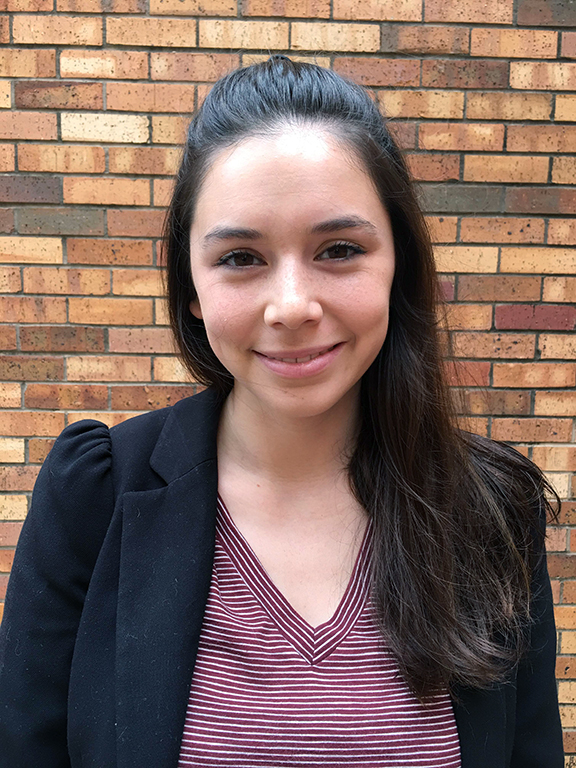In a yard just off Taft Boulevard, a sign with the slogan “Pray for Rain” seems to sit and wait, almost patiently, for just a drop to show that its being there is actually working. While prayers and wishes for rain continue each day, the fact remains that if rain doesn’t come soon Wichita Falls will enter a stage four drought situation and be faced with the possibility of running out of water. While the impending drought looms over the town, a new solution has come forth to fight it, rather than try and stop it. The Water Reuse Project is a new plan to treat wastewater from peoples’ homes and turn it into a safe and efficient source of drinking water.
“We’ve been doing some real innovative stuff here,” Daniel Nix, operations manager of the public works department at the cypress water facility, said. “Fifteen years ago even talking about using wastewater for drinking water was a big taboo. But with all the new technology now, it’s completely possible.”
The Water Reuse Project, a new water treatment plan passed by the City Council, officially started on Aug. 2 as contractors began installing a 63,000-foot long pipeline from the Cypress Water Treatment Plant to the River Road Wastewater Treatment Plant. The project is a direct reprisal of the city’s imminent drought situation as a last resort water supply for the city. Once completed, the 63,000-foot (12.3-miles) pipeline will carry 7.5 million gallons of water that will be treated, tested and redistributed into the city’s drinkable water supply.
“The original water treatment process went through a similar process; however it was only Lake Kemp water,” Nix said, “not wastewater, being treated for a drinking supply.”
The first step in this new water treatment process begins at the River Road Plant. The River Road Plant distributes treated wastewater to houses, businesses and farms solely for irrigation purposes. The new Water Reuse Project uses a 12.3-mile pipeline from the River Road Plant to the Cypress Water Plant to turn that wastewater into clean drinking water.
“The water from the River Road plant contains three parts that are above the limit of sanitized water: trial methanes, microbials and nitrates,” Nix said.
Unlike the Cypress Water facility, the River Road plant uses mainly a biological method to purify the water of the trial methanes, incorporating the use of bacteria that feed off the waste. The water is taken into the plant and stored into a large container where the water is then spun so that the waste materials fall to the bottom and are eaten by the bacteria and the clean water is taken out.
“The River Road Treatment Plant does a great job of taking the trial methanes out of the water,” Nix said. “But you have to remember their plant is used for irrigation purposes, not drinking. There’s still the nitrate and microbials that need to be taken out.”
The water is treated at the River Road Plant and is then moved to the Cypress Plant through the new pipeline at a rate of 7.5 million gallons per day.
Unlike the treatment in the River Road Plant, Cypress takes both a physical and chemical approach for the next phase of sanitation. The water that comes in first goes through the microfiltration, a tube composed of more than 15 million strands of spaghetti-looking microfibers enclosed in a 5 inch diameter tube about 5 feet tall that has a pore size of approximately 0.1 micron or close to 0.000004 inches in diameter. At the plant, the microfiltration systems are grouped and staged in sections along a walkway approximately 100 feet long where water is taken through, and pushed back out after being treated.
“The microfiltration stage is extremely efficient at removing protozoa such as Cryptosporidium, a protozoan that causes gastrointestinal illness with diarrhea in humans,” Nix said. “It is also pretty good at removing strains of bacteria, though not as good as protozoans, but isn’t very good at removing viruses.”
After the microfiltration, the water continues to the reverse osmosis portion, a process that reverses the flow of water in a natural process of osmosis so that water passes from a more concentrated solution to a more dilute solution through a semi-permeable membrane. The system is composed of a couple giant structures that look like hundreds of rolled up carpets stacked on top of each other with tubes of water going in one end and out the other. The water goes in the back of the cylinders, or rolled up carpet-looking structures, out the front and into the cylinder to the left in a weaving motion until the water reaches the end where it is then cycled three times through the reverse osmosis. Each time the water is cycled, 50 percent of it is treated through osmosis and ready to be used. In total, slightly more than 80 percent of the original water will continue to the next phase.
“While the microfiltration is proficient in removing solely protozoa, reverse osmosis has a very high effectiveness in removing protozoa, bacteria, and viruses,” Nix said. “It also goes further as to remove common chemical contaminants such as sodium, chloride and copper.”
Once the water leaves the reverse osmosis process, it is stored in a lagoon and mixed with water from lakes Kickapoo and Arrowhead where it is then coagulated and flocculated.
“The final step in the process is the Conventional Plant where coagulation, flocculation, sedimentation and filtration occur,” Nix said. “All waters, especially surface waters, contain both dissolved and suspended particles. The coagulation and flocculation processes are used to separate the suspended solids from the water.”
The coagulation destabilizes the suspended particles by putting coagulants with charges opposite to them. Once the charge is neutralized, the small suspended particles are capable of sticking together creating microflocs. Finally, a high-energy rapid mixer disperses the coagulants and promotes the particle collisions to finish the process.
Flocculation, the next step, is a gentle mixing stage that increases the particle size from submicroscopic microflocs to visible suspended particles. In flocculation the microflocs are brought into contact with each other through the process of slow mixing where collisions of the particles cause them to bond and produce larger visible flocs called pinflocs. The floc size continues to grow through additional collisions with inorganic polymers to form an even larger floc called a macrofloc.
According to Nix, the sedimentation and filtration steps are much simpler.
“We use sedimentation basins to settle out the floc before going to the filters,” Nix said, “followed by the last filtration step to get rid of as many of the flocs as we can.”
After the final stage of the treatment process, the water is distributed to the city and recycled through the treatment process again.
Although MSU operates on many of its own systems, it still gets water from the city. If the lakes get too low and the city enters a stage four drought, MSU will be using the same water the city is using.
“All drinking water is derived from wastewater,” Randall Hallford, associate professor of physical chemistry and board member for the re-mix water treatment program, said. “Every drink of municipal water is processed from the refuse water of the city above it.”
Hallford said the water proposed for use is already processed as well as any water retrieved from a reservoir. So the water brought into the city from the lakes is laden with bacteria, nitrates, salts, minerals and solid matter. What’s unique about the reuse water is that it actually will be easier to treat and there will be an adequate quantity to work with.
The treatment process is also less expensive. Because the reuse water is highly clarified, it only contains dissolved chemicals and bacteria rather than various types of viruses, protozoans or parasites. So, the chemical treatment takes care of the bacteria and the reverse osmosis will treat the more threatening dissolved chemicals.
As said by Hallford, there are two major benefits. First, is having an adequate water supply which helps prevent bacterial blooms in reservoir water that can be hard or impossible to manage without drastic and expensive measures. Second, the water is continuously analyzed for any hazardous substances or otherwise distasteful contaminates.
“It will be safe, cheaper to treat and readily available,” Hallford said. “All these reduce our cost and distress in a drought.”






